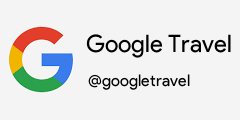A new report from brand analysts Crimson Hexagon looks at historical data from social media and other sources to identify 2010-2016 US consumer trends impacting 4 industries: Health & Wellness, Media & Entertainment, Technology and Transportation.
Below are some of their findings related to tourism, advertising, marketing.
Dining:
Between 2010 and 2015, consumers talked more on social media about eating out than they did about eating in; but in 2016 more conversations were about eating at home.
For 2010-2016, the predominant emotion related to Eating In was Joy (76%) but for Eating Out it was Disgust (44%).
Negative perceptions about eating out included “sick feeling” (unhealthy, overeating �" 900,000 conversations) and “too expensive” (120,000 conversations). Consumers said eating out is one of the first things they cut back on when trying to economize.
Home Entertainment:
Cable TV is dying because of 2 groups of people: those switching from cable to various forms of free TV, and those who have never been paid TV subscribers. Nielsen data show that since 4Q2013, US households that use only antenna or broadband TV have increased by 50%, while those with paid TV subscriptions have decreased by 4%. Complaints consumers have about cable TV include Expense (34,000 conversations), Too many commercials (23,000 conversations), Poor customer service (2,000 conversations). Top alternatives to cable TV that consumers said they chose in 2016 included (by numbers of conversations, and in roughly rank order): Netflix, Amazon, Hulu, Sling TV, Apple TV, Roku, antenna. Top 3 choices by sentiment were Netflix (42% positive), Hulu (37%), Amazon (30%). About 20% of consumers (skewing toward youth) say they love to live-stream events like concerts.
AI/AR/VR technologies:
Conversations about AI, AR, VR grew from practically zero in 2010 to around 1.5M in 2016 (90%+ about AI). But privacy concerns have caused sentiment about these technologies to grow steadily worse since 2010, to around 75% unfavorable in 2016. Consumers aged 35+ predominate in discussions of these technologies: women 35+ outnumber men under 18 by 4.85X.
Digital payments:
Conversations about PayPal predominated with about an 85% share, with Bitcoin at #2. But those numbers are distorted by the many conversations about the 2014 PayPal data breach, and the bankruptcy of Bitcoin exchange Mt. Gox. Sentiment-wise, Anger + Sadness predominate for all digital payment services. The majority of digital-payment users are male: about 65% for PayPal, 80% for Bitcoin.
Cars and Ridesharing:
After 4 years of increased car-buying, consumers began a shift toward ridesharing in 2016, with use of public transportation staying about flat. Top 5 cities for ridesharing are (rank-ordered): Austin, Philadelphia, NYC, Boston and Chicago. And in those cities, ridesharing gained most of its share at then expense of public transportation. The sentiments of car owners run slightly positive, while those of ridesharers and users of public transport skew toward negative. Most conversations about ridesharing involve interactions with drivers �" either positive or negative. Delays and cancellations are popular topics of conversations about public transport.
So, what does all this tell us?
- Restaurants may be entering a rough patch. Possible fixes might include healthier ingredients and recipes, smaller portions, better experience bundle, lower prices.
- Cable TV advertising is reaching many fewer consumers than it used to, and that trend will continue. We need to put ads where the eyeballs are.
- Maybe Google is wrong about AI/AR/VR technologies being an unalloyed advertising/marketing panacea. Privacy concerns of women 35+ - an enormous segment of AI/AR/VR users and coinversationalists - is a potentially enormous problem.
- It's not clear why users of digital payments (PayPal and Bitcoin, for all practical purposes) seem to be so mad and so sad about their experiences. This could simply be lingering resentment of past data breaches and bankruptcies - which might go away with time - or it could be something else that won't.
- A shift from use of public transportation to ridesharing in major cities could mean that we'll soon be seeing advertising in Uber/Lyft cars like that now found in trains and buses. Surely someone out there is working on that.

 - David
- David

Comments on Social media analysis of US consumer trends impacting tourism, advertising and marketing